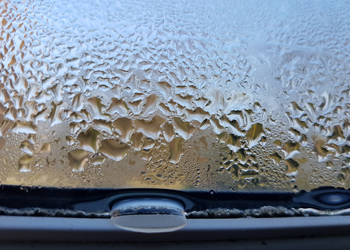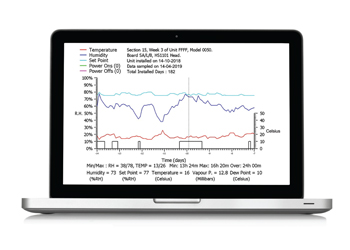Measuring your indoor environment
It is vital for social housing landlords to monitor the indoor environment within their housing stock. Doing so will highlight problems such as damp, condensation, and poor air circulation. This means landlords can fulfil their duty of care to residents by providing good indoor air quality. Monitoring properties and logging data over an extended time period is also useful if the landlord is ever involved in a legal case brought for disrepair. The data and stats gathered can prove whether ventilation has been working and has been used properly and if it has not this may point to the causes of damp and humidity.

Surveying the Environment
As soon as a landlord has established that there is a problem with condensation and mould in a property then a specialist survey of the building should be undertaken. It is important that the survey focuses on four key areas. Firstly, a visual survey of the property’s exterior should be carried out. At this stage any signs of damp caused through water penetrating the exterior of the building should be noted. The next step is to take a humidity reading of the property to determine how much water is in the air which will lead to condensation. This should be followed by a temperature reading of the property. Finally, a damp reading of the walls should be logged, this will also flag up any problems with burst or leaking pipes.
If the temperature of the walls within the property are below dew point temperature water from the air will condensate on the walls potentially leading to mould growth. All this collated information relating to the property should be saved by the landlord for future reference.
Monitoring the Environment
Modern ventilation products record details of the home environment, such as humidity and temperature levels to allow landlords to track and analyse the correlation of these variables on one graph. A landlord can then track the effects changing lifestyle habits on a home environment and it will demonstrate how reducing relative humidity through adequate heating and ventilation can maintain a healthy home and provide good indoor air quality.
Airtech’s sophisticated ventilation products feature data logging facilities which help to protect landlords against future cases of disrepair. Datalogging can also record vapour pressure and dew point and a datalogger will even continue working if the fan has been turned off, showing that the occupier has switched it off.

Along with data logging, Airtech’s specialist control platform monitors the data as it is collected and modulates the fan accordingly to react automatically and proportionally to rising humidity levels. This quick and effective method of monitoring humidity ensures the resident maintains the optimum environment in the home to avoid condensation forming and maintains good indoor air quality.
